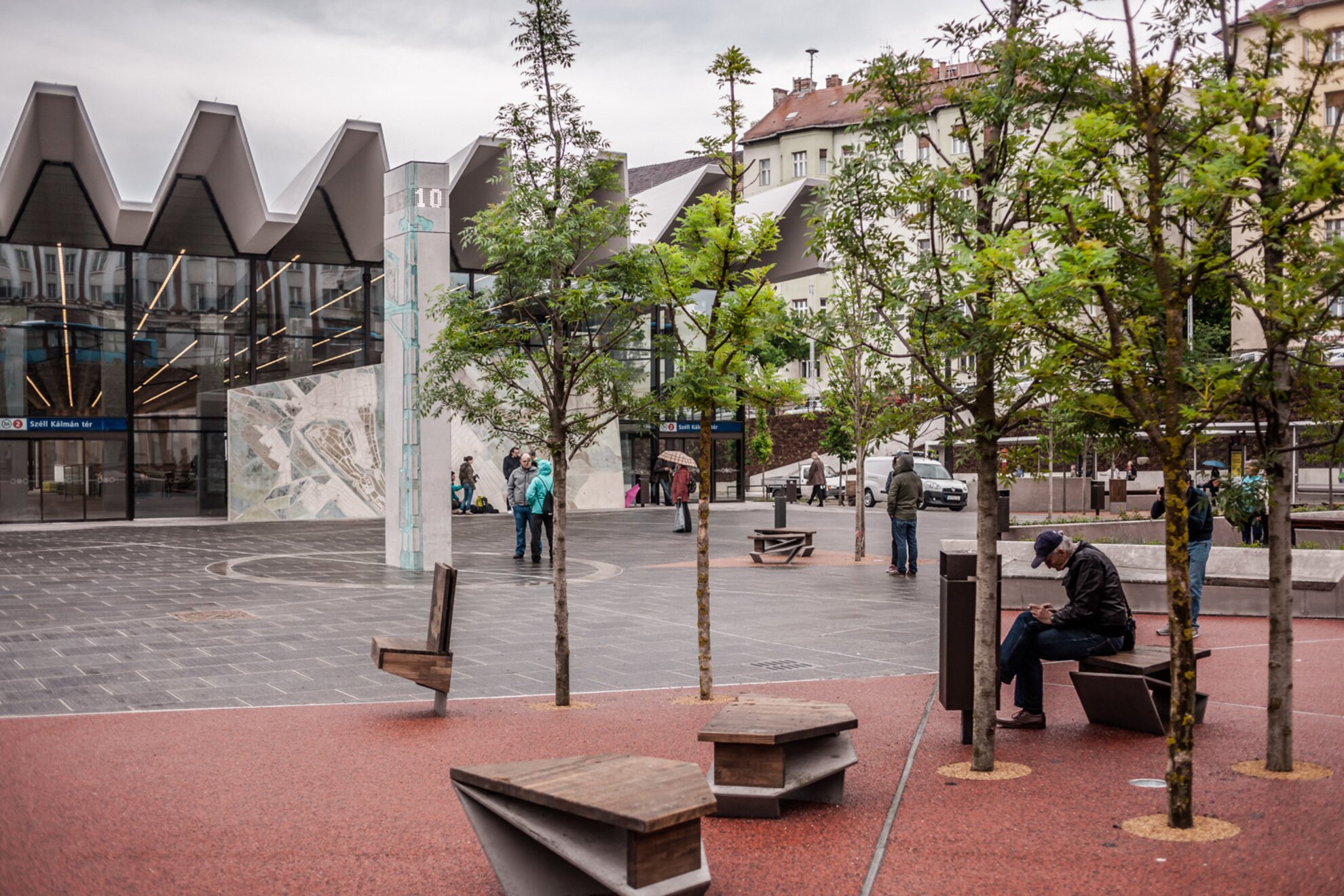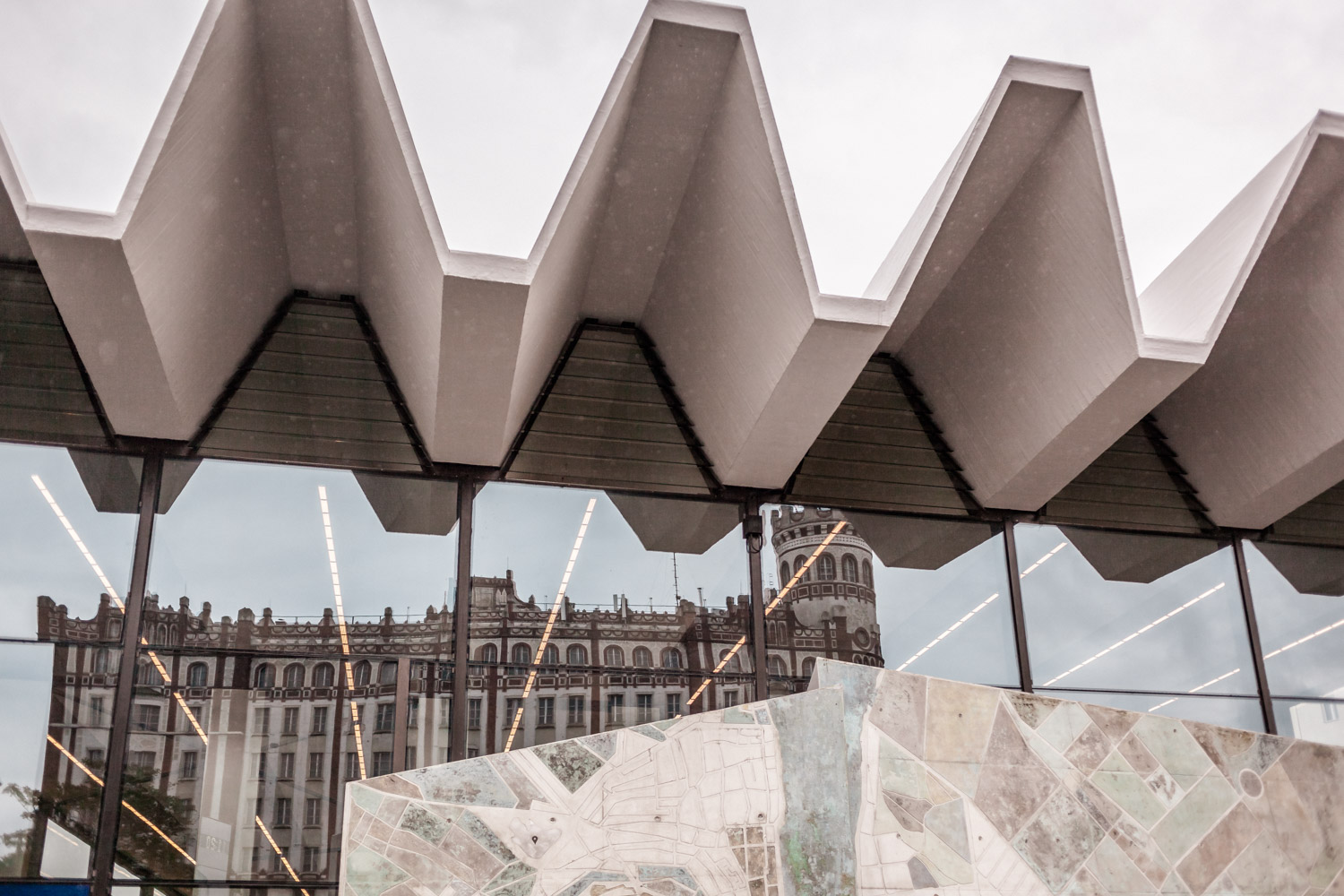It should have happened decades ago – it was a part of every mayor’s election campaign, and it was a disgrace to the city: this was Moszkva Square (obviously a Soviet-imposed name), in the very heart of downtown Buda. However, in recent years it got its original name back, Széll Kálmán Square, and then began the long process of renovating it from being a communist-era eyesore to becoming a modern-day transportation hub. Finally, this central plaza is now a part of Budapest’s modern city scene – we present an overview of the refurbishment, along with photos of this 21st-century urban nexus.
If we start from the middle of the square, the first impression is that how unrecognizable the metro stop building is. Retaining the giant shell-shaped concrete roof from the “Moszkva tér” days, this distinctive structure benefited even more from the restoration than was anticipated: during the day, it is a simple, accessible, functional glass building, while during the night, it is an exciting “object” lit from the inside. The fan-like building was originally built in 1972 but now, as it got cleaned up, it could easily pass as a contemporary design.

At certain points they placed strips between the seams of the quality, non-slip paving – these have hidden LEDs inside them. This is a simple yet elegant way to shake things up for the night. The terracedpublic space on the top of one of the new buildings will be very useful in the future, for sunbathing, reading, or even meetings.

During the renovation, the unnecessary tram rails, booths, and other “decorations” were removed. The square now houses the reunited rails of the Buda tram network.
The bike lines were also linked together, and the designers left space for the MOL BUBI-bike station and bike-stands. The bus stops were placed on the edge of the square and they planted trees in between.

The planting of the planned 179 trees was actualized in a way that they don’t interfere with the significant traffic. Our favorite criticism is when the wannabe-experts say that they “cemented the trees”: we would like to calm everybody down, since the material over the roots is breathable, but it lets the rushing crowds to step on it. The slopes on the Vérmező Street and Várfok Street sides are also covered in plants; the one in the latter direction also has an elevator and an escalator.

After months of restoration works, the fountain-statue of Makrisz Agamemnon, a Greek-born artist settled in Hungary, was put back to its place at the Szilágyi Erzsébet fasor side of the square, and now it’s surrounded by a pleasant green area.

This is not the only watery attraction, since a device planted to the middle of the square can work as a humidifier and also as a fountain. It’s still possible to meet under the clock, although it is a much more modern one, designed by Szövetség 39; the old clock is now preserved at the Kiscelli Museum.

The square has an interesting history: during the second half of the 19th century, a brickyard operated in the area, and then a small lake took shape at its place, which was used for ice skating during the winter. At the beginning of the 20th century, a sports-center was established here, a hall and a tennis field was built next to the lake. At the middle of the decade after World War I, the moderate, brick-striped building of Postapalota was built based on the plans of architect Gyula Sándy. This building still has an important role in the landscape of the square.

The characteristic round tower on the corner of the palace used to have a practical purpose: it was the machine room of the elevator. The building, has, unfortunately, been standing abandoned since 2008: we hope that the reconstruction of the square will change that. All in all, the new design of the square created by Építész Stúdió Kft., Lépték-Terv Kft., and Főmterv makes it much more usable, and gave it a more unified image. Our photo gallery shows how Széll Kálmán Square looks now.




